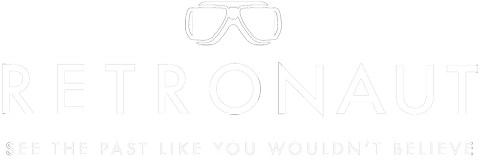
“Hey, did you know that I’m always going back in time…?
I am the backwards traveller, ancient wool unraveller”
Backwards Traveller
- Paul McCartney and Wings
All Creatures Great and Small
One Sunday evening in 1978, the eight-year-old me watched the closing credits of All Creatures Great and Small with tears streaming down my cheeks. The TV show, based on James Herriott’s well loved novels, tells the story of a veterinarian in Yorkshire, England, in the 1940s. As the theme music came to an end and the English countryside faded from the screen, I was grief-stricken. I wanted to go to that place, but there was no way to get there. Seeing me upset, my Dad told me we could visit Yorkshire. But it wasn’t Yorkshire that I longed to visit, it was those years—and they were locked away forever.
I had a pathological nostalgia. I grieved not only for my own rapidly receding childhood, but also for the years, the ‘pasts’, that I would never experience. The past seemed as real to me as the present, as real as another country. But unlike another country, its borders were closed.
The Devil on the Road
My favorite childhood stories were always about time travel, like The Devil on the Road, by Robert Westall, and Tom’s Midnight Garden, by Philippa Pearce. Traveling back through time happened so easily to the characters in the stories. Why couldn’t it happen to me? It seemed like an oversight, a technicality. It was as though I was surrounded by exotic and unexplored countries, and a thief had stolen my passport.
I found it twenty-five years later. On a wet weekday lunch hour, I was browsing in a secondhand bookshop in a small, seaside town in England. I wasn’t looking for anything other than shelter from the rain, and, as with every other lunchtime, an escape from the awful sense of still not knowing what I wanted to be when I grew up.
Color wipes away the years
1879: Still life with mounted rooster and parakeet
(Louis Ducos du Hauron)
What I found was a book of color photographs of Britain, taken during World War II. This was the first time I had seen color photographs of the 1940s and even earlier decades. As I turned the pages, I found it hard to make sense of what I was seeing. These pictures did not look like the past as I understood it.. Instead they looked like ‘now’, my ‘now’, this ‘now’. The color had wiped away the years, just as polish wipes away the tarnish on a ring.
Pouring over these pictures felt like the next best thing to time travel. Each page dislocated my sense of when is ‘now’, and when was ‘then’. The images tore tiny holes in my internal map of the past. And it was this tearing that was so powerful.
1830: 1498 - The Discovery of America
The Map of the Past
We all have a map of the past inside our heads. It is an amalgam of all the pictures and films we have seen, the history books we have read, and the stories we have heard about what life used to be like. It is similar to the memory of a physical place that we have visited. For each of us, this map is the past.
But I had suddenly realized that my map was inaccurate. It was limited, fixed, and static. It depicted the past as an inferior version of the present—a lower-resolution version, with less sex appeal, less star quality, little self-awareness, and mostly in black-and-white.
Over the next six years, I scoured England’s thrift stores, museums, and archives, looking for old color photographs. Along the way I found other pictures—both in color and black-and-white—that were just as effective in ripping up my time map: technological prototypes that were way ahead of their time; predictions for the year 2000 imagined in the year 1900; an invitation to the launch of the Titanic; Martha Stewart before her empire; the Eiffel Tower half built. I was discovering a new brilliantly colorful past of high-resolution, high contrast, low noise—and lots and lots of detail.
Finally it dawned on me. No one has ever lived in ‘the past’. Everyone has always lived in the ‘now’. What I mean is that being alive in the past felt like being alive now. Think of your own life five years ago. What did it feel like? Maybe your hair was longer or shorter, or you had more or less money, but what did it feel like to be alive? It felt like “now”—it was just a different version of today.
In January 2010, I started a blog to share the pictures that had changed my life. I chose the name Retronaut to mean ‘someone who travels back’. I picked a new pair of old goggles as my logo because: a) they are both old and new at the same time, and b) because Retronaut is about seeing the past through a different lens.
Much to my surprise, these photographs had a contagious effect.
From Retronaut: The Photographic Time-Machine (National Geographic)




